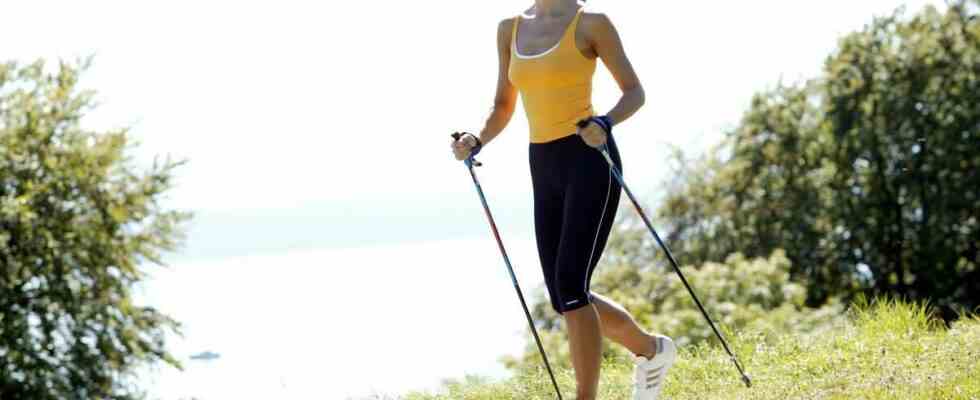Coupled with good hiking shoes, they relieve the joints, provide stability, and allow you to keep a certain rhythm. But for nature, walking sticks do not seem so beneficial, quite the contrary. While hordes of hikers have begun to descend on the trails of France for the summer holidays, some of them will have to change their habits. Because on certain fragile paths, and in particular along the Breton coast, it is no longer authorized to plant these sticks in the ground, in any case those which have metal ends, in particular used by Nordic walking fans.
“Like ice axes, these spikes puncture the paths and can wreak havoc,” said David Samzun, the mayor (PS) of Saint-Nazaire (Loire-Atlantique), who issued a municipal ban fifteen days ago. The increase in foot traffic with these sticks contributes to the erosion of coastal paths, hiking trails and the degradation of vegetation. And in particular on the famous GR34, also called the customs trail. “It’s a magnificent place, nature lovers must be able to make this small gesture”, estimates the city councilor, who confesses to being an assiduous hiker.
One solution, rubber tips
In order not to deprive walkers who would not want to leave their poles of these sublime landscapes, there is a solution. That of capping them with rubber tips, on sale for a few euros in sports stores. As in Saint-Nazaire, it is now the condition sine qua non to cover the 83 km of the coastal path of Belle-Ile-en-Mer, since June 20. There too, the elected officials adopted this regulatory text and are preparing to deploy a communication campaign after the small holes caused by these spikes became more and more numerous and visible on the magnificent GR340. Elsewhere in Brittany, some municipalities have already been asking walkers for several years to switch to these plastic tips, which also have the advantage of eliminating noise, often to the great relief of the inhabitants.
And the practitioners, what do they think? At the French Hiking Federation, we see this in a good light. “When we see the subsidence in certain places, where it is sometimes necessary to move back the route, we say to ourselves that we must do everything to preserve our paths, which are treasures, observes Madeleine Lebranchu vice-president of the FFRandonnée, based in Morbihan. And this even if it is true that these tips do not provide the same sensations if you practice Nordic walking, which requires you to plant your stick to stimulate the movement. »
With these athletes, precisely, we sometimes feel stigmatized. So much so that in Morbihan, the organizers of the Ultra-Marine had recently obtained from the town hall of Arradon the suspension of the prohibition order in force for several years for the event. They proposed that this 29 km race serve as a scientific experiment to identify the damage…
After the outcry of local residents and environmental associations, the participants were finally summoned to put back their tips. “You have to diversify your practice, adapt it according to the paths, believes Madeleine Lebranchu. Otherwise, we will soon have none left. »

